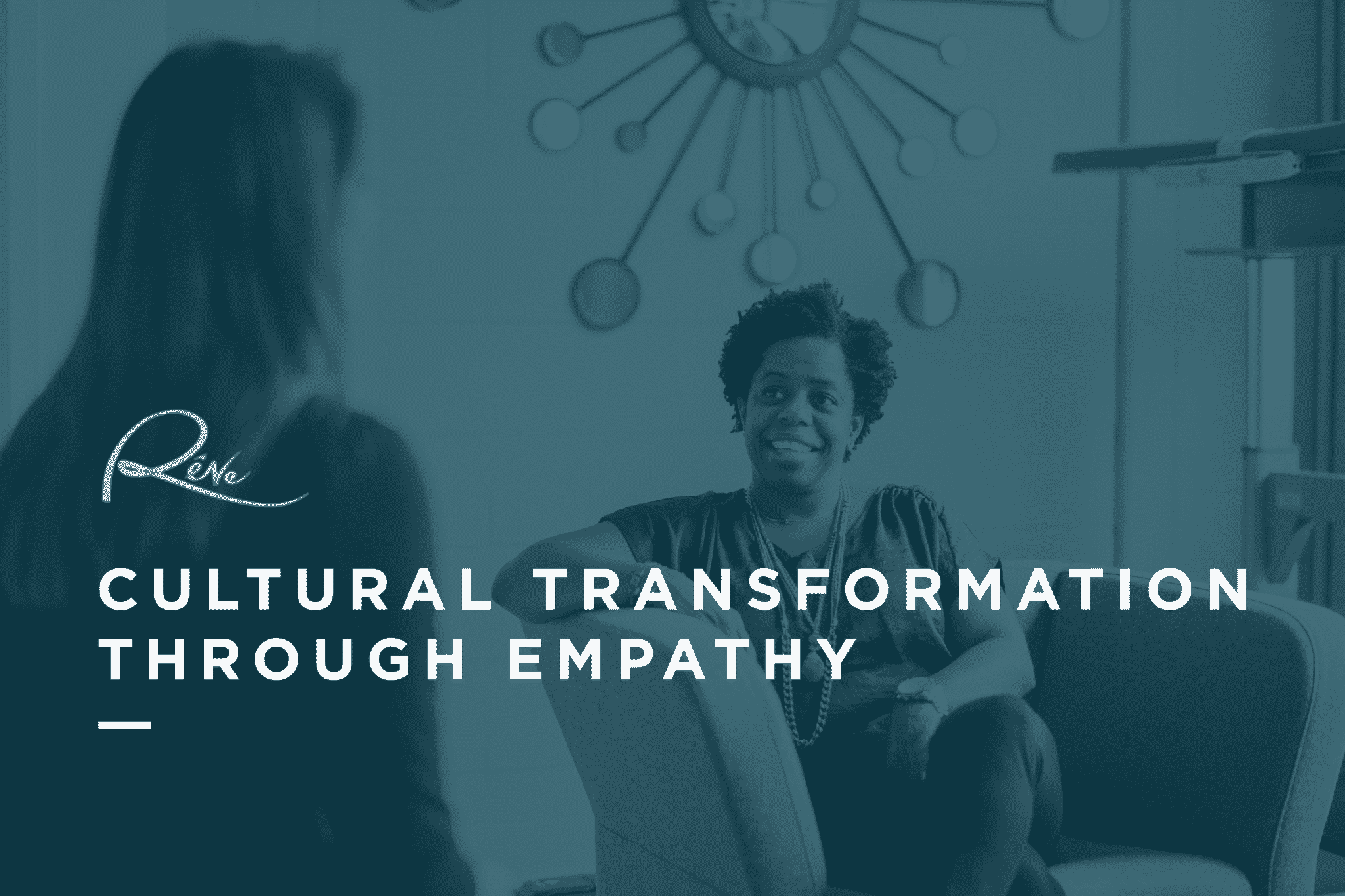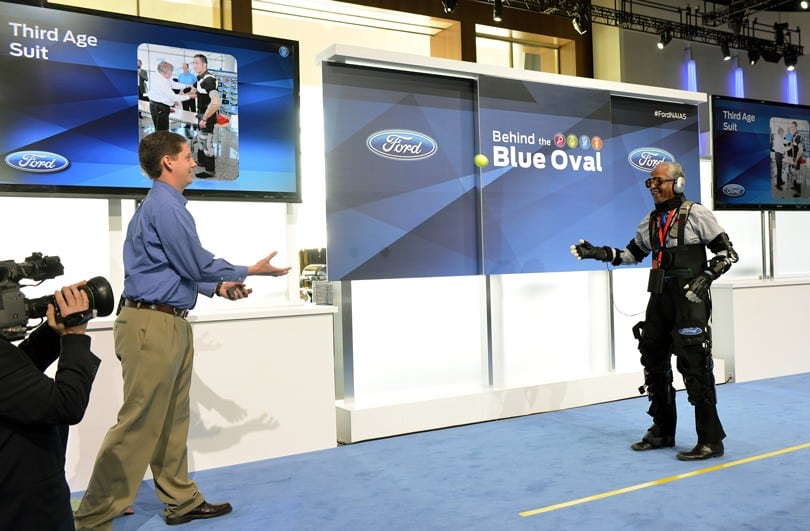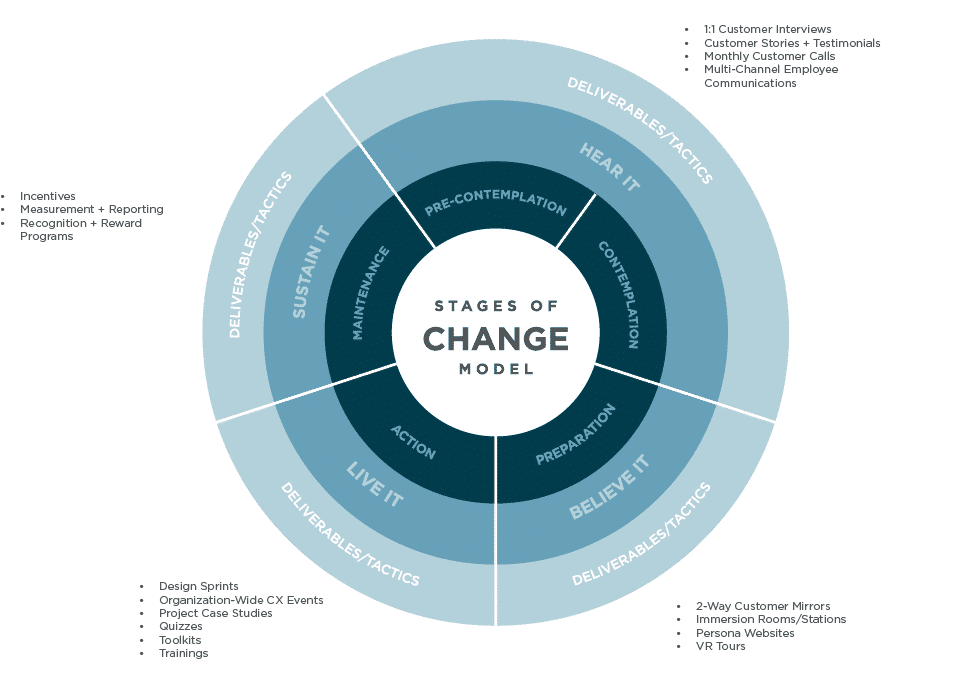
"You never really understand another person until you consider things from his point of view - until you climb inside his skin and walk around in it."
Harper Lee | To Kill a Mockingbird
Empathy is an evolving art and science. For over 100 years, philosophers, social psychologists, and neuroscientists have defined and redefined the meaning of empathy. There are perhaps as many definitions as there are authors in the field.i Despite this lack of consistency in the conceptualization of empathy, we know a few things to be unequivocally true:
Ultimately, empathy—which we refer to at Rêve as one’s ability to understand and share the feelings of another—is a powerful chemical and neurological mechanism. When paired with an authentic desire to understand the experiences of others, empathy can transform culture and enable positive change at scale.
Evidence indicates that feeling empathy for a person in need is an important motivator of helping.iv Research also suggests that we enhance our ability to receive and process information when we are empathetic, becoming more in-tune to our environment.v As a result, individuals who feel empathy in abundance foster and maintain closer relationships in their social networks and community.vi
It’s no surprise that empathy plays both a crucial interpersonal and societal role for individuals. When applied at the organizational level in today’s global marketplace, empathetic design also plays a critical role in problem-solving—developing high-impact solutions to increasingly significant systemic challenges ranging from education to healthcare.vii
When a company consistently expresses empathy for its customers, employees do better work—72% of employees believe empathy drives employee motivation.viii Empathy also unlocks the capacity for creativity to deliver on unmet or latent needs and close costly customer experience gaps—84% of CEOs believe empathy drives better business outcomes.ix
"Many of the most noble examples of human behavior, including aiding strangers and stigmatized people, are thought to have empathetic roots."
HODGES & MYERS
BETWEEN $460 AND $860 MILLION
“In the U.S., the customer experience gap—the gap between brand promise and brand experience—costs the average brand between $460 and 860 million in lost revenue every year.”x
Although 98% of humans have the ability to empathize wired into their brain, most don’t tap into their full empathetic potential in everyday life. One study of American students suggests that levels of empathy fell by 48% between 1979 and 2009.xi Furthermore, the number of CEOs saying that empathy in their organizations is sufficient plummeted 22 points from last year, with just half agreeing.xii
“Complex transformations in three areas—societal, technological and work-related are creating an increasingly anxious, unhappy and lonely world, where anger is increasing, and empathy appears to be in decline.”
John Scott
Brands perceived as not customer-centric have an NPS experience rating 69 points lower than customer-centric brands.xiii Many organizations are taking the first step to improve their customer-centricity, investing heavily in tools and technologies to boost their voice of customer “VOC” data and analytics capabilities. But often, this data is isolated to a small subset of employees within a research team.
Customer experience insights and empathy, for that matter, cannot remain the privilege of an individual research team. Successful culture transformation and sustained behavior change require deliberate practice and intrinsic motivation from all stakeholders to connect with customers in meaningful ways.
THE EMPATHY EXAMS
“Empathy isn’t just something that happens to us—a meteor shower of synapses firing across the brain—it’s also a choice we make: to pay attention, to extend ourselves. It’s made of exertion, the dowdier cousin of impulse.”
-Leslie Jamison (214), The Empathy Exams
An absence of empathy in new product and service design can prove disastrous. Take, for example, Google’s 2013 commercial launch of its first wearable product, Google Glass. The product failed to gain traction with customers and instead garnered considerable criticism for disregarding basic customer needs. Voice-activated actions left users feeling socially awkward in public. Additionally, the camera posed privacy concerns for those on the other side of the glass—leading many bars and restaurants to ban the device altogether.xiv Google is typically renowned as a leader in technology innovation. However, when designing the Google Glass, a lack of empathetic understanding towards users resulted in a “cool” yet undesirable solution.
"People ignore design that ignores people."
FRANK CHIMERO
Case in point, Ford Motor Co. has committed to help new engineers walk in the shoes of expectant mothers and elderly individuals.
THE EMPATHY BELLY
Ford found that 88% of pregnant women drive during their entire pregnancy. To better understand the challenges and physical limitations of these expecting mothers, Ford developed a 30 lb suit that, when worn, mimics what it’s like to be pregnant in real life. A built-in compression belt restricts the lungs, weighted bags simulate a fetus’ head pushing on the bladder, and lead balls simulate fetus limbs—all features to impede mobility and comfort so automakers can design more empathetically.xv

KATIE ALANSON
"Everything from doors, seat belts, even buttons—have improved in the last decade since the first weighted garments were used because engineers are now able to 'empathize with their customers.'"
THE THIRD AGE SUIT
For the last 20 years, Ford has also been using an age suit to ensure new employees understand the customer experience of senior drivers and passengers. The suit simulates mobility, hearing, and vision impairments. It features gloves that mimic Parkinson’s and carpal tunnel symptoms, impairment glasses to demonstrate vision-related issues like cataracts and glaucoma, and acoustic earmuffs to expose obstacles faced by the hard of hearing.xvi

KATIE ALANSON
“Our customers are people, not just numbers, and we’re committed to supporting their independence and helping them stay behind the wheel as long as possible with inclusive and universal designs.”
Beyond product and service design, empathetic practices should be adopted at every level of a business—from the frontline to the C-suite—to improve the end-to-end customer experience. But making empathy core to your organizational DNA doesn’t happen overnight. Enterprise culture transformation and empathy-building requires a tried and tested model for organizational behavior change.
THE RÊVE WAY
To drive the adoption of new mindsets and behaviors, we start by working with our client teams—leveraging their existing VOC data and insights—to define desired future-state behaviors. From there, we conduct research to validate where their employees are currently at in their change journey. This research allows us to design a behavioral strategy and targeted interventions to deepen understanding of the customer where we observe employees are gapped. Finally, we activate these interventions to shape behavior change and retain empathy for the long haul. Employee touchpoints can take on many shapes and sizes but collectively bring to life customer stories and experiences that drive empathy.

• We use persona deep dives to animate habits, preferences, and pain points of key customer segments (i.e., Personas Websites).
• We craft member vignettes to bring customer pain points and needs to life through video and audio (i.e., Customer Testimonials, Monthly Customer Calls).
• We develop digital immersion experiences using interactive virtual reality to highlight personas, journey(s), and VOC themes (i.e., VR Tours).
• We build hands-on physical exhibitions allowing employees to walk in the shoes of customers (i.e., Organization-Wide CX Events, Immersion Rooms/Stations, 2-Way Customer Mirrors).
• We structure interactive activities rooted in data, research, and analysis of actual customers to reinforce behavior change (i.e., Leadership Kits, Typeforms + Quizzes).
Cultivating a culture of empathy increases employee engagement, unlocking the capacity for creativity to close even the most extensive customer experience gaps. At Rêve, we strive to enable and sustain this transformation through strategic behavior design.
SOURCES
i Cuff, Benjamin M.P., et al. Https://Wiebke-Wetzel.de/Wp-Content/Uploads/16-Cuff-Empathy. pdf, Emotion Review, 2014, wiebke-wetzel.de/wp-content/uploads/16-cuff-empathy.pdf.
ii Miller, Claire Cain. “How to Be More Empathetic.” The New York Times, The New York Times, 2019, www.nytimes.com/guides/year-of-living-better/how-to-be-more-empathetic.
iii Jaffe, Adi. “A Look in the Mirror Neuron: Empathy and Addiction.” Psychology Today, Sussex Publishers, 17 July 2019,www.psychologytoday.com/us/blog/all-about-addiction/201907/ look-in-the-mirror-neuron-empathy-and-addiction.
iv Batson, C. et al. “Is Empathic Emotion a Source of Altruistic Motivation.” Journal of Personality and Social Psychology 40 (1981): 290-302.
v Battarbee, Katja, et al. Empathy on the Edge, IDEO, Jan. 2014, new-ideo-com.s3.amazonaws. com/assets/files/pdfs/news/Empathy_on_the_Edge.pdf.
vi Morellia, Sylvia A., et al. Empathy and Well-Being Correlate with Centrality in Different Social Networks, 6 July 2017, web.stanford.edu/~dco/pubs/2017_PNAS_Morelli_ EmpathySocialNetworks.pdf.
vii Brown, Tim, and Jocelyn Wyatt. “Design Thinking for Social Innovation (SSIR).” Ssir.org, 2009, ssir.org/articles/entry/design_thinking_for_social_innovation.
viii Businessolver. “Businessolver Empathy Executive Summary Whitepaper.” Businessolver, 2021, resources.businessolver.com/c/2021-empathy-exec-summ?x=OE03jO.
ix Businessolver. “Businessolver Empathy Executive Summary Whitepaper.” Businessolver, 2021, resources.businessolver.com/c/2021-empathy-exec-summ?x=OE03jO.
x Clear Strategy. “EXPERIENCE GAP.” Clear Strategy, 2018, clearstrategy.com/thinking/experience-gap/.
xi Zurich Insurance Group. “Decline in Human Empathy Creates Global Risks in the ‘Age of Anger.’” Zurich.com, Zurich, 2020, www.zurich.com/en/knowledge/topics/global-risks/decline-human-empathy-creates-global-risks-age-of-anger.
xii Businessolver. “Businessolver Empathy Executive Summary Whitepaper.” Businessolver, 2021, resources.businessolver.com/c/2021-empathy-exec-summ?x=OE03jO.
xiii Capgemini Digital Transformation Institute. The Disconnected Customer., 27 June 2017.
xiv Dam, Rikke, and Teo Siang. “Design Thinking: Getting Started with Empathy.” The Interaction Design Foundation, UX courses, 30 June 2018, www.interaction-design.org/literature/article/design-thinking-getting-started-with-empathy.
xv Giang, Vivian. “How Ford Uses an ‘Empathy Belly’ to Improve Its Employees’ Soft Skills.” Www.linkedin.com, 10 Aug. 2016, www.linkedin.com/business/talent/blog/talent-acquisition/how-ford-uses-empathy-belly-to-improve-soft-skills.
xvi Giang, Vivian. “How Ford Uses an ‘Empathy Belly’ to Improve Its Employees’ Soft Skills.” Www.linkedin.com, 10 Aug. 2016, www.linkedin.com/business/talent/blog/talent-acquisition/how-ford-uses-empathy-belly-to-improve-soft-skills.